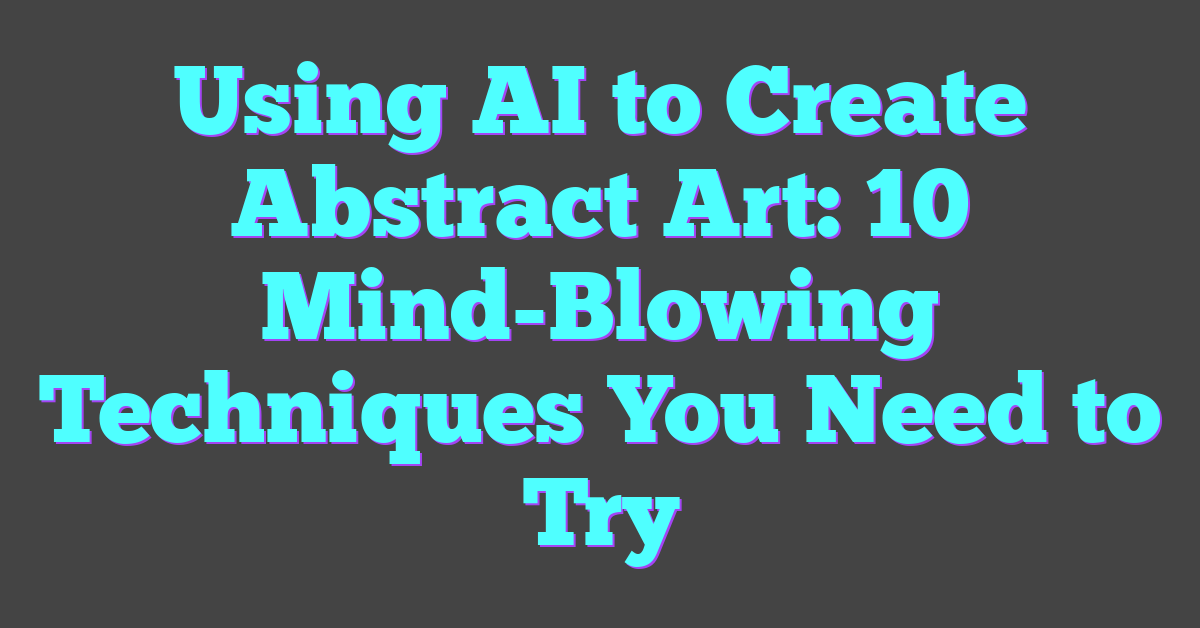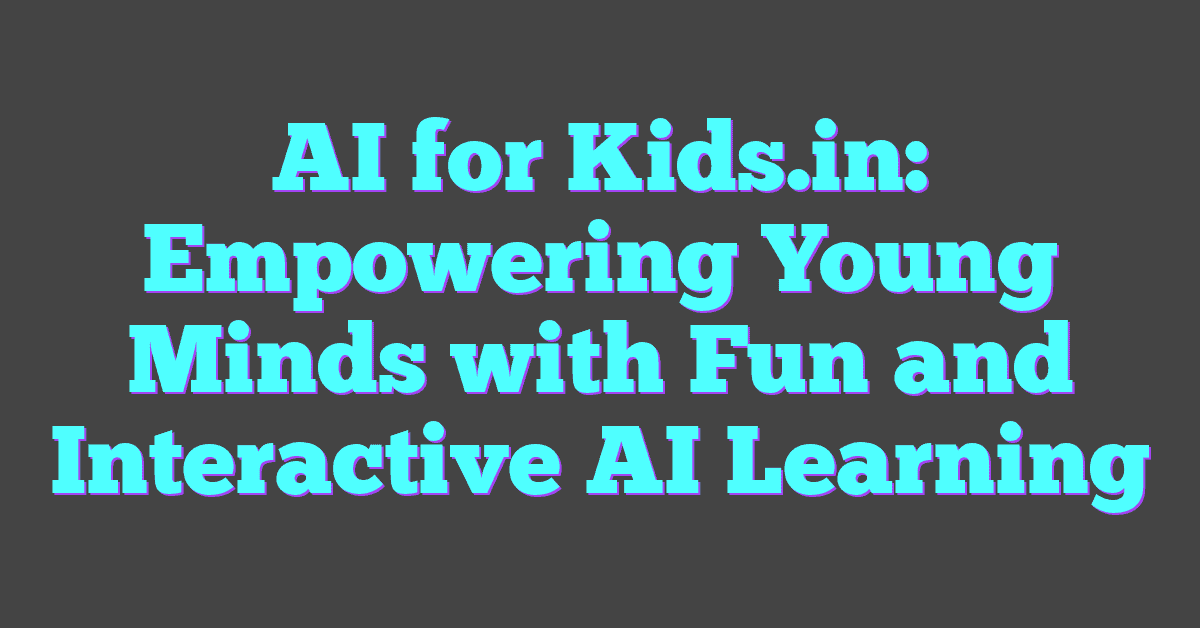Key Takeaways
- AI blends technology and creativity, revolutionizing abstract art with machine precision and human imagination.
- Key AI processes include data analysis, pattern recognition, generative algorithms (like GANs), iterative refinement, and style transfer.
- Advanced technologies such as Generative Adversarial Networks (GANs) and Convolutional Neural Networks (CNNs) are fundamental in creating AI-driven abstract art.
- AI enhances creativity and accessibility, enabling artists of all backgrounds to explore and produce sophisticated abstract works.
- Challenges remain regarding originality, authorship, and technical limitations like high computational costs and the need for diverse training data.
- The future of AI in abstract art promises personalized art generation, integration with VR/AR technologies, and more intuitive, user-friendly AI tools.
The fusion of technology and creativity has opened up exciting new possibilities in the art world. Using AI to create abstract art is transforming how artists approach their craft, blending human imagination with machine precision. This innovative method allows endless experimentation, where algorithms and artistic intuition combine to produce mesmerizing visuals once unimaginable.
With AI tools analyzing vast amounts of data and recognizing intricate patterns, artists delve deeper into abstract expression, pushing boundaries beyond traditional methods. This synergy between artificial intelligence and abstract art not only broadens the scope of creative exploration but also invites a wider audience to engage with and appreciate the evolving landscape of modern art.
Understanding AI in Abstract Art
AI transforms abstract art by leveraging machine learning algorithms to create intricate and innovative designs. This fusion enhances both the creative process and the final artistic output.

How AI Generates Abstract Art
AI generates abstract art through several key processes:
- Data Analysis: AI analyzes extensive datasets of existing abstract artworks to identify patterns and styles.
- Pattern Recognition: Machine learning models recognize and replicate complex patterns found in the data.
- Generative Algorithms: Algorithms like Generative Adversarial Networks (GANs) produce new, unique abstract compositions based on learned patterns.
- Iterative Refinement: The AI iteratively refines its output, enhancing details and complexity with each cycle.
- Style Transfer: AI applies specific artistic styles to its creations, blending multiple influences into a cohesive piece.
Technologies Used
| Technology | Description |
|---|---|
| Generative Adversarial Networks (GANs) | Pairs of neural networks that generate and evaluate art pieces for realism and creativity. |
| Convolutional Neural Networks (CNNs) | Specialized for processing visual data, enabling detailed pattern recognition. |
| Deep Learning Frameworks | Tools like TensorFlow and PyTorch that support the development and training of AI models. |
| Natural Language Processing (NLP) | Assists in understanding and generating descriptions that guide the art creation process. |
| Reinforcement Learning | Techniques that allow AI to learn optimal art creation strategies through trial and error. |
Benefits of AI in Abstract Art
Artificial intelligence introduces new dimensions to abstract art, offering unique advantages to artists and the art community.
Enhancing Creativity
AI algorithms expand creative possibilities by generating complex patterns and designs that surpass human imagination. Machine learning models like Generative Adversarial Networks (GANs) produce novel visual elements, enabling artists to explore diverse aesthetics. Additionally, AI facilitates iterative refinement, allowing continuous improvement and innovation in artwork creation.
Accessibility for Artists
AI tools democratize abstract art creation by lowering technical barriers. Artists without formal training in digital tools utilize AI-powered platforms to generate sophisticated art pieces. Machine learning models assist in style transfer and pattern recognition, simplifying the creative process. This accessibility encourages a broader range of artists to engage with abstract art, fostering an inclusive art community.
Challenges and Considerations
Despite AI’s advancements in abstract art, several challenges and considerations persist.
Originality Issues
AI-generated art prompts debates on originality and authorship. Determining the creator—whether the artist or the machine—complicates traditional notions of artistic expression. Legal frameworks for intellectual property of AI-created works are still evolving. Additionally, AI relies on existing data sets, which may limit the uniqueness of the generated art by remixing rather than creating entirely new concepts.
Technical Limitations
AI tools for creating abstract art encounter technical constraints. High computational power is necessary for running complex algorithms like Generative Adversarial Networks (GANs), which can be cost-prohibitive. Algorithms may produce inconsistent results, lacking the intentionality and nuance found in human-created art. Fine-tuning models to achieve specific artistic styles requires specialized knowledge, potentially restricting accessibility for some artists. Moreover, ensuring diverse and unbiased training data remains a significant challenge to avoid repetitive or skewed outcomes.
Popular AI Tools for Abstract Art
Several AI tools empower artists to create unique abstract art by leveraging advanced machine learning algorithms.
Feature Comparison
| Tool | Algorithm Type | Customization Options | Pricing Model | Notable Features |
|---|---|---|---|---|
| DeepArt | Convolutional Neural Networks (CNNs) | Style transfer, color adjustment | Subscription-based | High-resolution outputs, multiple style templates |
| Artbreeder | Generative Adversarial Networks (GANs) | Gene manipulation, cross-breeding | Freemium with premium tiers | Collaborative creation, vast image repository |
| DALL-E | Transformer-based models | Text-to-image generation | Usage-based pricing | Detailed and diverse image generation, API access |
| RunwayML | Various ML models | Real-time editing, plugin support | Subscription-based | Integration with creative software, extensive model library |
| Processing | Customizable open-source frameworks | Code-based customization | Free | Flexibility for bespoke creations, active community |
User Experiences
- DeepArt Users appreciate the tool’s ability to produce high-resolution images with intricate style transfers, enhancing their creative projects.
- Artbreeder Community enjoys the collaborative aspect, allowing for the blending of different art styles and easy experimentation with genetic image manipulation.
- DALL-E Enthusiasts value its text-to-image capabilities, enabling precise control over the art creation process through descriptive prompts.
- RunwayML Creators benefit from its seamless integration with popular creative software, streamlining their workflow and expanding creative possibilities.
- Processing Developers highlight the platform’s flexibility and the supportive community, which fosters innovative and customized abstract art solutions.
Future of AI in Abstract Art
AI continues to reshape abstract art, driving innovation and expanding creative possibilities. Advancements in machine learning promise further transformations in the art landscape.
Emerging Trends
AI-generated abstract art leverages sophisticated algorithms to create intricate designs and patterns. Increasingly, artists collaborate with AI to enhance their creative processes. Generative Adversarial Networks (GANs) remain at the forefront, enabling the production of high-resolution artworks. Additionally, real-time style transfer allows for dynamic art creation during live performances. Integration with virtual reality (VR) and augmented reality (AR) technologies provides immersive experiences, bridging the gap between digital and physical art forms.
Potential Developments
Future developments in AI for abstract art include more personalized art generation based on individual preferences. Enhanced neural networks could offer greater customization options, allowing artists to fine-tune specific aspects of their work. Improved reinforcement learning techniques may result in more intuitive and responsive AI tools, facilitating seamless collaboration between humans and machines. Furthermore, advancements in natural language processing (NLP) could enable artists to create art through verbal instructions, simplifying the creative process. As AI technology becomes more accessible, a broader range of artists will adopt these tools, fostering a more diverse and inclusive abstract art community.
Conclusion
The fusion of AI and abstract art is opening new horizons for creativity and expression. Artists can now explore limitless possibilities, blending technology with their unique visions. This synergy not only enhances the artistic process but also makes abstract art more accessible to a wider audience.
As AI continues to evolve the landscape of abstract art will keep expanding inviting more artists to experiment and innovate. Embracing these advancements can lead to groundbreaking creations that push the boundaries of what art can be. The future of abstract art is bright enriched by the endless potential of artificial intelligence.




